Everything you need to know about choosing bathroom flooring - a guide to the best materials
Step safely out of the bath with our essential guide to stylish and practical bathroom flooring
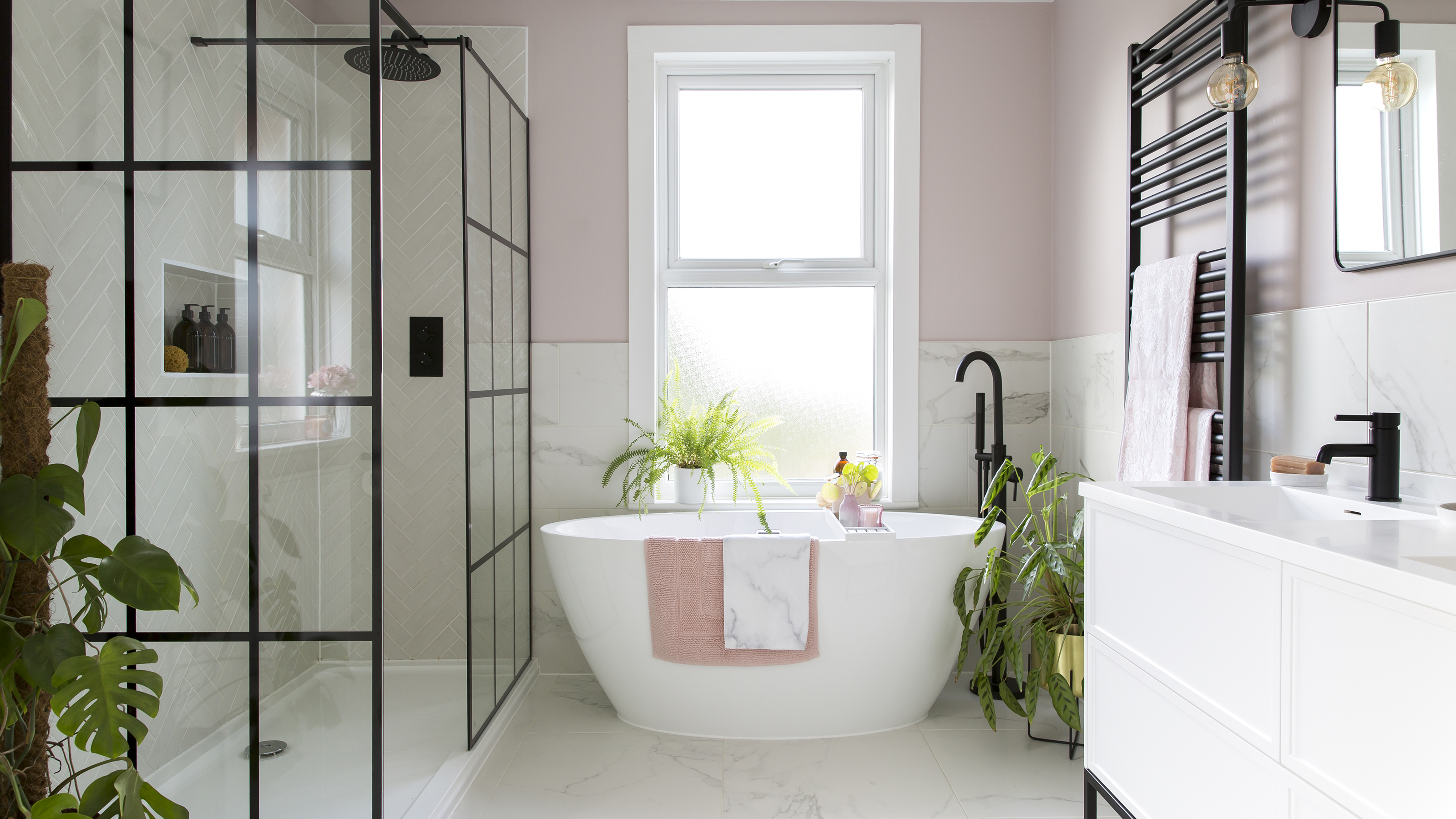
Holly Cockburn
Bathrooms are steamy environments where splashes are commonplace, so knowing how to choose bathroom flooring to account for this is key to making your space as functional as possible.
Bathroom flooring ideas encompass a huge range of materials, styles and colours so there's bound to be something to suit your interior taste and practical requirements. For example, if you have a high-traffic family bathroom then you'll need a non-slip surface that will stand up to the perils of everyday life, but if you're looking to kit out a master bedroom en-suite, you might be able to put fashion first.
Many of the usual options, such as solid wood, carpet and laminate, simply can't cope with the rigours of a damp atmosphere. Regular splashes can often raise and part the layers that make up laminate flooring and cause timber to swell and warp.
Carpet, although soft and warm underfoot, can start to rot and smell due to constant wetness and also proves hard to clean. Instead, go for one of the many durable materials that are water-resistant and easy to maintain.
1. Stone flooring
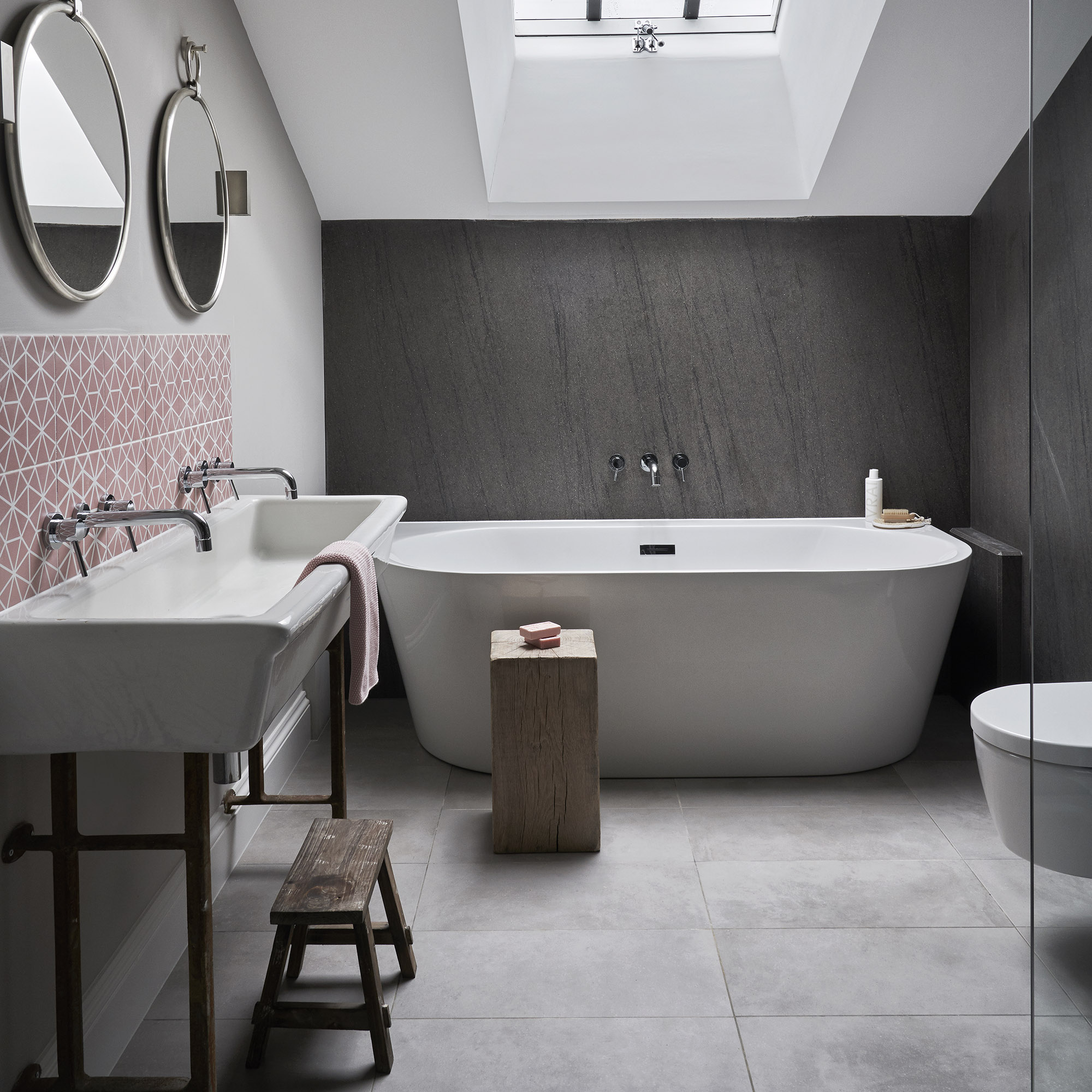
Durability is key in a bathroom and stone flooring will certainly stand the test of time. From granite to marble and travertine, there are plenty of beautiful stones that will provide long-lasting flooring and a stylish look.
Granite is particularly known for its strength and scratch resistance making it well-suited to family bathrooms and high-traffic zones. Marble will require a bit more maintenance but if the classic and elegant look is what you're after, then it's a compromise you might be willing to make.
You'll need to make sure to seal natural stone tiles regularly to protect them from moisture and acidic products. Natural stone will likely cost more than other alternatives, so properly caring for your flooring is essential.
We advise steering clear of marble and polished stone in high-traffic areas as they can be slippery - you don't want any accidents when getting out of the shower or bath!
2. Porcelain and ceramic tiles
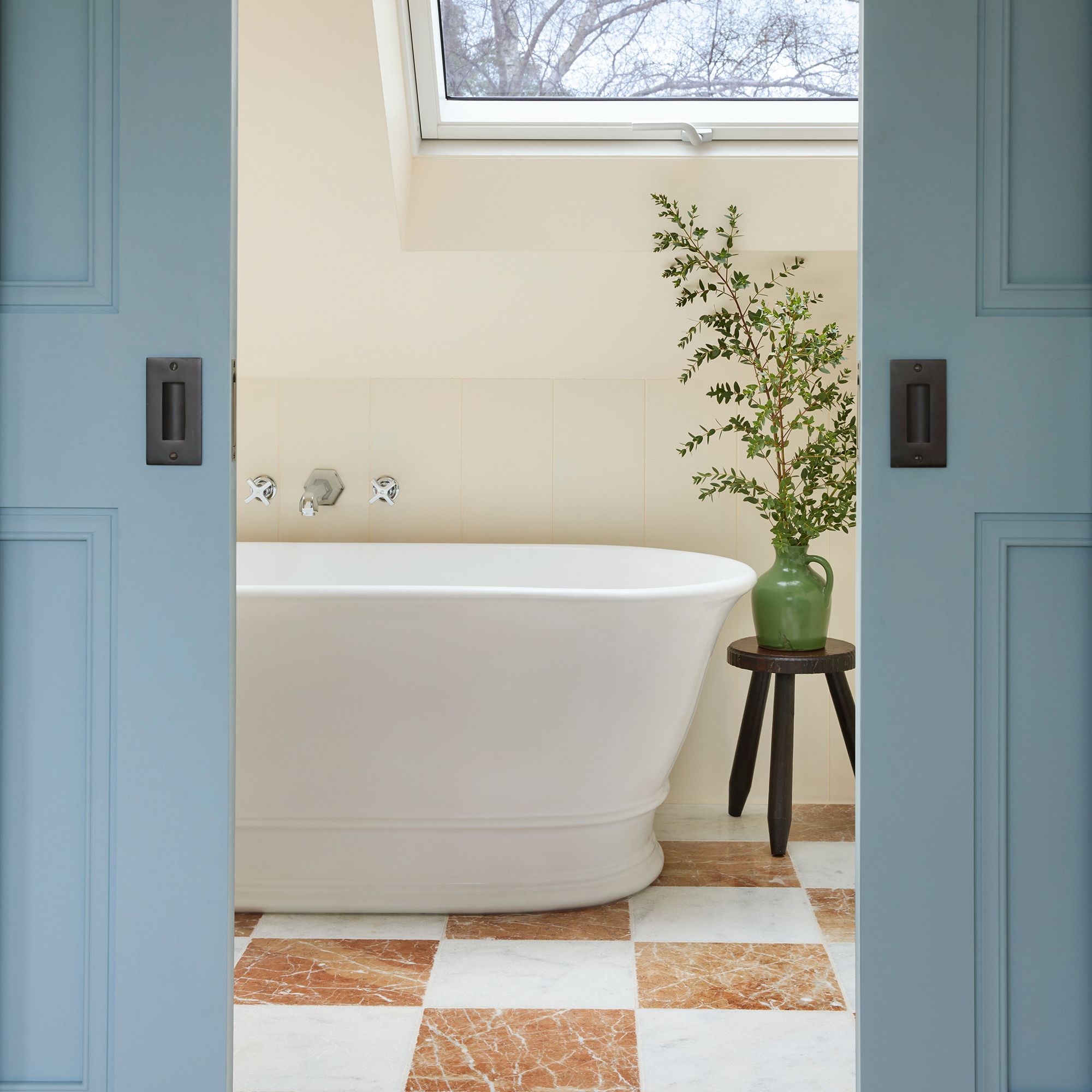
Porcelain and ceramic tiles have the look and feel of stone but without the natural imperfections and high price tag.
'Porcelain is an incredibly durable material, not only thanks to its dense scratch-proof surface but also because of its non-absorbent properties. This is especially important for bathroom surfaces which undergo regular deep cleaning,' explains Mike Whitfield, interiors expert at LUSSO.
'Porcelain tiles are also an ideal material to use with underfloor heating. Due to the composition of the tile, porcelain is resistant to heat damage and exposure to high temperatures, and even bright sunlight will not damage or discolour the tiles.'
Ceramic tiles are a popular choice, however, Mike warns that 'Ceramic is naturally more water-absorbent than porcelain - so, when designing a bathroom where water contact is inevitable, porcelain is the more durable choice for homeowners.'
3. Engineered wood flooring
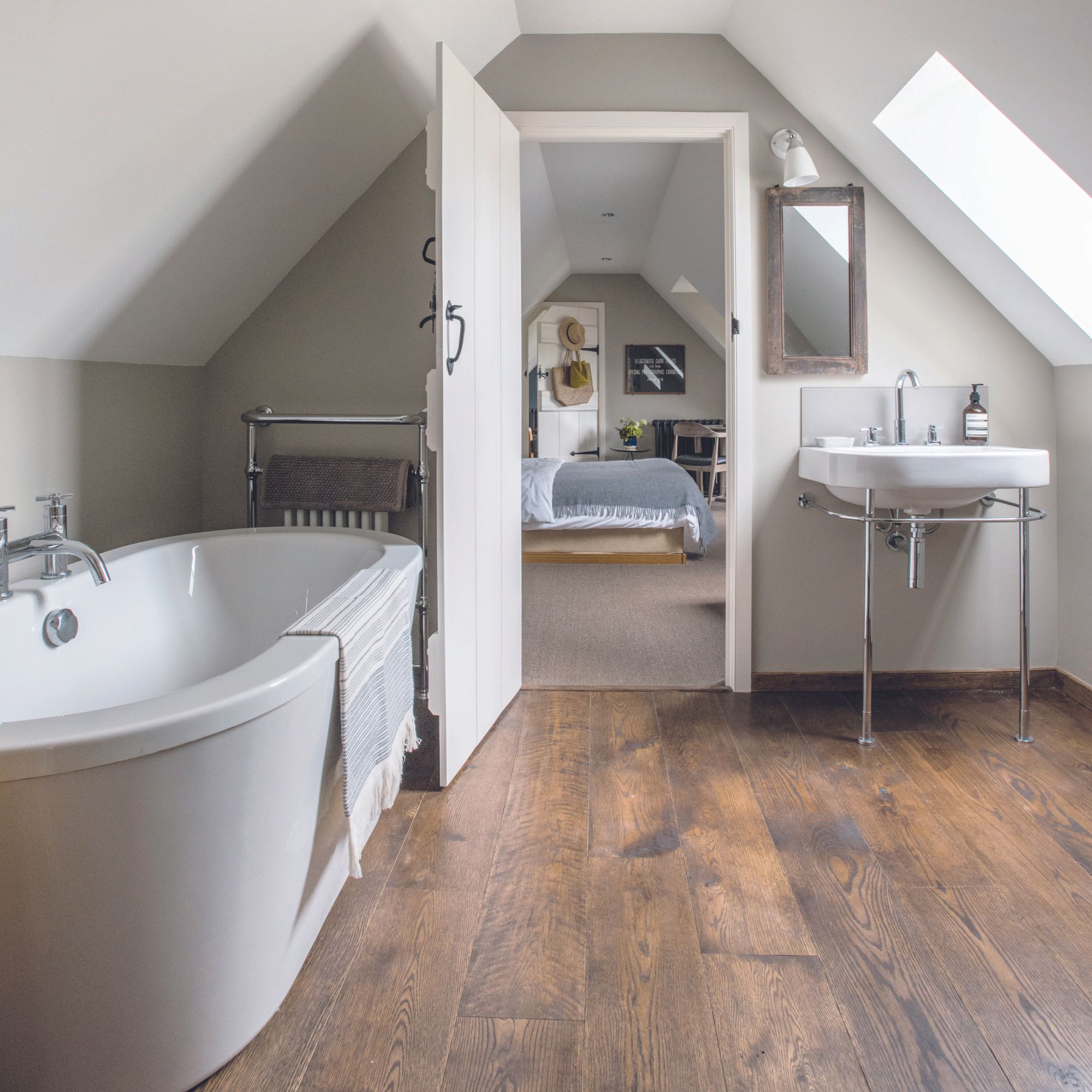
Real wood isn't a practical choice for bathrooms, but the appearance of it is great for warming up an often clinical-looking space. So how do you achieve the same look while also making sure your flooring is practical? Engineered wood flooring, of course.
Engineered wood flooring has a top layer of hardwood and a multi-layer core, creating a stable surface that limits the movement in the floor. Moisture in a bathroom naturally causes movement, which is why engineered wood flooring makes for a far more practical choice that will withstand humidity and water splashes.
Many types of engineered wood flooring can also be used with underfloor heating, it's worth checking that it's compatible first, but it will both literally and figuratively warm the room.
4. Vinyl tiles
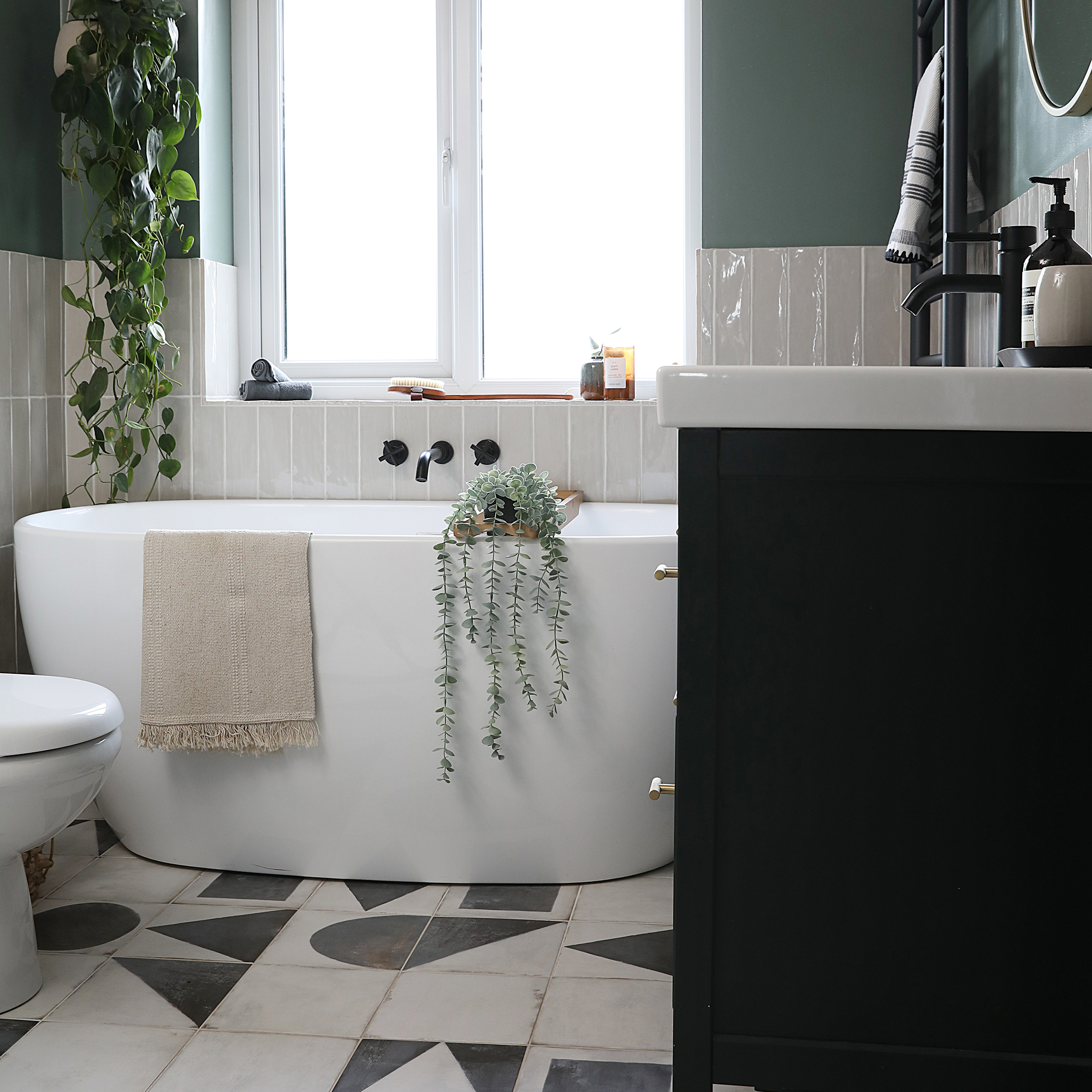
Vinyl is one of the more affordable flooring options, making it great if you want to give your bathroom a makeover on a budget. It's hard to go wrong with vinyl flooring - it's easy to install yourself if you're willing to try your hand at a bit of DIY, so you can save costs on professional fitting too.
'The best floor tiles for bathrooms if you're on a budget are vinyl and laminate floors. These types of flooring are a popular choice for many rooms in the house, especially bathrooms, as they’re cheap, easy to lay down and come in an array of styles and patterns,' explains Nancy Emery, bathroom expert at Drench.
'Out of these two options, vinyl tends to be more waterproof - sheet vinyl, vinyl tile and luxury vinyl flooring are usually made with completely waterproof properties, whereas laminate flooring can be prone to water damage and swelling if not looked after. Therefore, if you’re looking for cheap floor tiles that will stand the test of time, we recommend vinyl tiles.'
FAQs
What type of flooring is best for a bathroom?
The best type of flooring for a bathroom will always be a material that is non-porous, slip-free and easy to keep clean.
'The main priority when it comes to bathroom flooring is that it's anti-slip and able to resist wear and tear such as water damage. We would always recommend materials like vinyl, lino and ceramic tiles as the best options for these reasons,' explains Nancy Emery, bathroom expert at Drench.
'To ensure your floors are resistant to water-damage, vinyl or mosaic tiles are the way to go. Vinyl locks together tightly and prevents water from seeping through, so it's a wonderful choice for bathrooms and kitchens, as these are the areas that are likely to get wet the most. Mosaic floors are also a great choice as they’re non-porous and anti-slip. Even if your bathroom floor tiles are waterproof, it’s important to invest in a bath mat to reduce moisture on the floor after a shower or bath - this will help to keep your tiles in good condition,' Nancy adds.
How to care for your bathroom flooring
Stone flooring
This usually has some kind of sealant applied, as it's otherwise very porous and will stain easily. Even when sealed, it's important to keep the floor free of grime, so sweep and vacuum and wipe up spills immediately.
There are many different finishes of stone, each with different maintenance needs, so check with the supplier on how to keep it looking its best.
Vinyl, lino and tiles
These just need a quick mop to freshen them up.
Porcelain and ceramic
These types of flooring should be swept and cleaned using a non-abrasive mop or sponge.
Bathroom flooring is a big and often costly decision, so make sure you balance both practicality and style when choosing. Your bathroom scheme and everyday life will thank you for it.
Get the Ideal Home Newsletter
Sign up to our newsletter for style and decor inspiration, house makeovers, project advice and more.
- Holly CockburnContent Editor
-
 Should your front door colour match your hallway? Interior experts reveal 3 reasons why it should (and 3 reasons it shouldn't)
Should your front door colour match your hallway? Interior experts reveal 3 reasons why it should (and 3 reasons it shouldn't)Are you team matching or contrasting?
By Ellis Cochrane
-
 This £200 limited-time discount makes this Dyson vacuum cheaper than I’ve ever seen it - run don’t walk to Argos for this bargain
This £200 limited-time discount makes this Dyson vacuum cheaper than I’ve ever seen it - run don’t walk to Argos for this bargainIt's the most affordable Dyson on the market right now
By Lauren Bradbury
-
 Martin and Shirlie Kemp’s pastel flower beds has given their Victorian renovation a romantic look - how you can get the look
Martin and Shirlie Kemp’s pastel flower beds has given their Victorian renovation a romantic look - how you can get the lookTheir pastel garden is the cottage garden inspo you've been looking for
By Kezia Reynolds
-
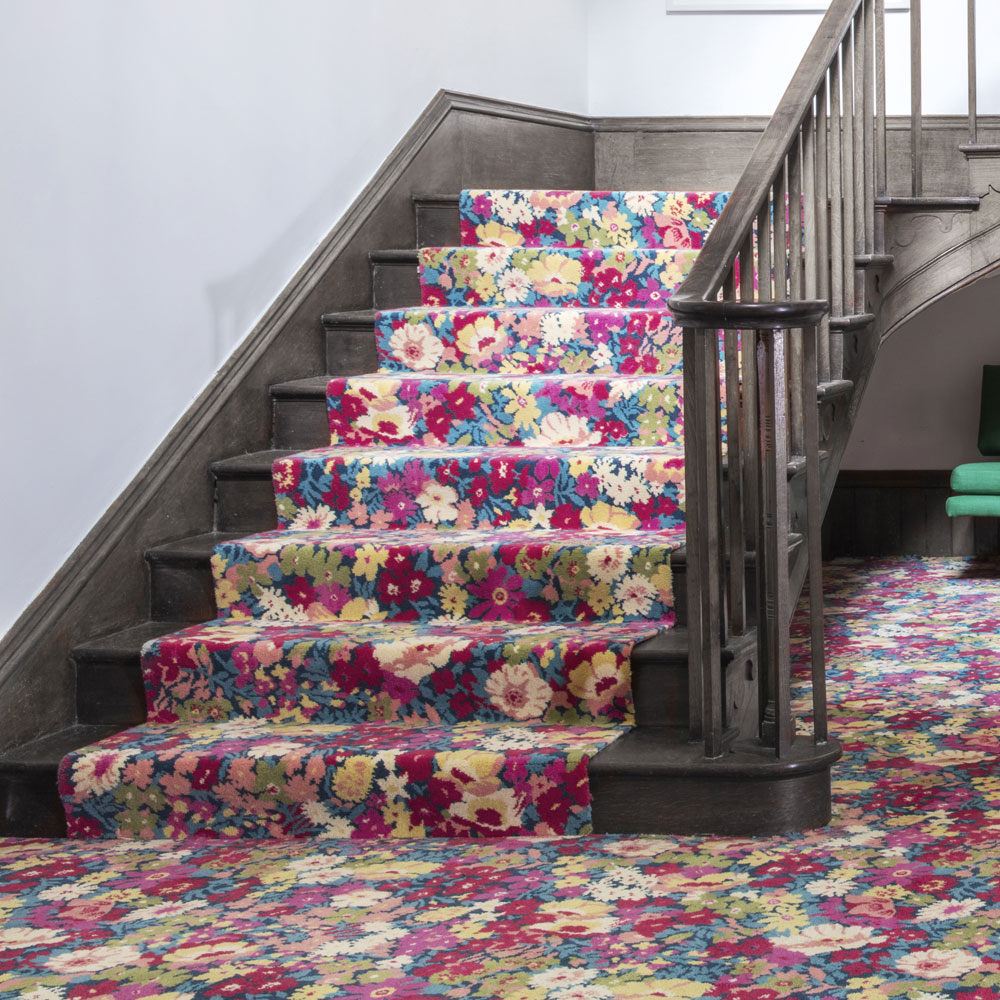 Best stair carpets – the most fabulous stair runners and flooring for staircases and landings
Best stair carpets – the most fabulous stair runners and flooring for staircases and landingsCreate a warm, welcoming look in your hallway with a new stair carpet or runner
By Amy Cutmore
-
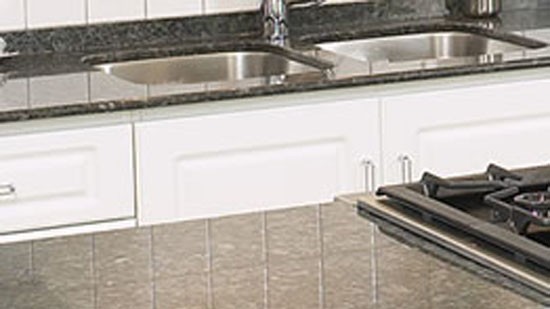 Granite worktops: how to buy and care for your granite surface
Granite worktops: how to buy and care for your granite surfaceTough, practical, beautiful.. no wonder granite is the top choice for worktops. Check out our expert guide to make sure you get the granite that's right for your kitchen.
By Thea Babington-Stitt